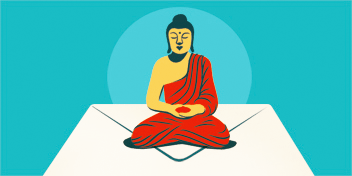In honor of Tricycle’s 25th anniversary, we asked some of our longtime contributors to revisit statements they made in early issues of the magazine. We wanted to know how their thinking might have changed or ripened since the publication of their earlier responses concerning topics as varied as rebirth, race, and what it means to “preserve the dharma.”
–Sam Mowe, Contributing Editor
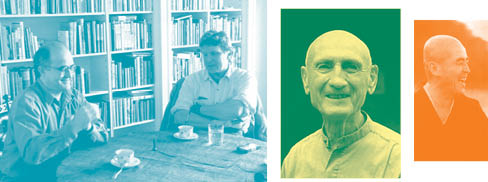
Stephen Batchelor on Rebirth
From “Reincarnation: A Debate,” with Robert Thurman (Summer 1997):
Batchelor: I did believe very literally in rebirth when I was training as a Tibetan Buddhist monk. But I used to ask myself, if there were no rebirth, would I behave differently? And the answer is no. Rebirth was never actually a driving force.
Nearly 20 years later, I would still stand by most of what I said about rebirth in my debate with Robert Thurman, though I would present my position today in a more nuanced manner.
This debate appeared in Tricycle the same year that my book Buddhism without Beliefs was published. In that book, I take an explicitly agnostic stance on the matter: I acknowledge that I am equally unable either to affirm or deny the doctrine of rebirth. Since then, I have come to regard that position as a kind of “eel-wriggling,” a term used in the suttas (and also by one of my critics) to describe someone attempting to avoid getting caught in the trap of committing oneself.
While the term “agnosticism” might provide a veneer of intellectual respectability, in the end it is little more than an acknowledgment of the inherent limitations of human knowledge. Anyone, Buddhist or otherwise, who declares that they believe in rebirth thereby affirms that they do not possess any actual knowledge of it. For if you knew there was rebirth, you would no longer need to believe in it. By definition, to believe in something requires that one be agnostic (“not knowing”) about it. Therefore, rebirth remains something you do not know but only believe to be true. From this perspective, to then declare that one is “agnostic” about the matter has a rather hollow ring to it, for the simple reason that it would apply equally to believers and nonbelievers.
Although adopting an agnostic position can serve as an important reminder of the need to keep an open mind regarding matters about which one is uncertain, it can also obscure how most of our knowledge of the world operates along a spectrum of probabilities rather than according to a clear-cut split between things you know and things you don’t know. So while I would still maintain that I do not know whether one is reborn, given the current scientific understanding about human beings, rebirth strikes me as highly improbable. I find it very difficult to fit the doctrine of rebirth into what we currently know about evolution and neuroscience. In addition, there are considerable philosophical difficulties in understanding how an immaterial consciousness that is reborn could ever meaningfully interact with a material body and brain that die.
More recently, though, I have come to regard the entire debate about rebirth as irrelevant to the practice of the dharma. As long as one persists in trying to prove that rebirth exists, whether by doctrinal arguments or empirical research into the experiences of young children who claim to remember former lives, one risks getting tangled up in exactly the kind of thicket of views that the Buddha constantly warned against. In my latest book, After Buddhism, I argue that we need to relinquish the view of Buddhism as a truth-based metaphysics and recover the soul of the dharma as a task-based ethics. The first question of a practitioner of the dharma, therefore, should not be “Is this true?” but “Does this work?” The problem with the doctrine of rebirth is not that it may be untrue, but that for the majority of people alive in the world today it simply does not work anymore. I have thus discarded agnosticism in favor of an ethical and therapeutic pragmatism, which, I believe, represents well what is distinctive and original in Gotama’s teaching.
I have come to regard the entire debate about rebirth as irrelevant to the practice of the dharma.
From such a secular Buddhist perspective, rebirth needs to be treated as a useful metaphor rather than as an empirical fact. It is sometimes claimed by contemporary Buddhists that rebirth is something that takes place from moment to moment, that one is being reborn each time one encounters a new situation in this life. Yet this interpretation, I feel, completely misses the point. Rebirth is a not a metaphor for the continuity of life as such but a metaphor for what hinders us from flourishing as persons and communities. The Pali term punabbhava (like its Tibetan equivalent, yang srid) literally means “again becoming.” I understand this to refer to the compulsive repetitive patterns of behavior that trap us in cycles of attachment, fear, hatred, and so on. These patterns not only cause us and others grief but, more important, obstruct or hinder the freeflowing of our life as a stream, which of course is a metaphor for the eightfold path. So although I said to Robert Thurman that “rebirth was never actually a driving force” behind my Buddhist practice, I would qualify that today by saying that rebirth as a metaphor for a repetitive and frustrating existence has always been the primary driving force that has led me to practice the dharma.
Stephen Batchelor is a Buddhist teacher and writer who lives in southwest France. A co-founder of Bodhi College, he leads retreats and seminars worldwide. His most recent book is After Buddhism: Rethinking the Dharma for a Secular Age.
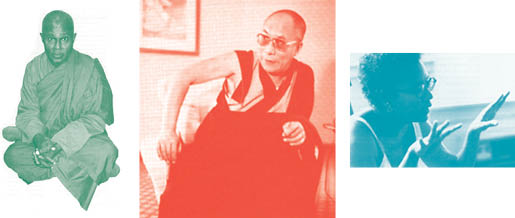
bell hooks on Race
From “Waking Up to Racism” (Fall 1994):
Often white people share the assumption that simply following a spiritual path means that they have let go of racism: coming out of radical movements—civil rights, war resistance—in the sixties and seventies and going on to form Buddhist communities, they often see themselves as liberal and marginalized, proudly identifying with the oppressed. They are so attached to the image of themselves as nonracists that they refuse to see their own racism or the ways in which Buddhist communities may reflect racial hierarchies. This is made more problematic where the emphasis in the predominantly white communities is on letting go of the self.
Significantly, meaningful progress has been made over the past decades in diverse dharma communities. We hear more from people of color who fully embrace Buddhist practice. We have many more voices writing about Buddhism and contemplative spirituality. These changes are guiding lights. But we still have a long way to go. A spiritual practice that emphasizes ending domination in all its forms (racism, sexism, homophobia, class elitism) can help move us further on the path of creating beloved community.
Preserving the dharma is not so much about the preservation of what has come before as it is about an individual commitment to renew the dharma all the time through the way we live.
As practitioners working to understand how we could eliminate dominating practices within Buddhist circles, we found that the practice of mindfulness could serve as a place of resistance. Indeed, mindfulness practice as a place to begin inner work empowers us to always engage in critical reflection of our individual role in creating suffering. I think this sort of practical use of mindfulness has emerged from the work of caring. In my life, the focus on equanimity is the daily practice that moves me always in the direction of lovingkindness.
bell hooks is an acclaimed intellectual, feminist theorist, cultural critic, artist, writer, and the founder of the bell hooks Institute.
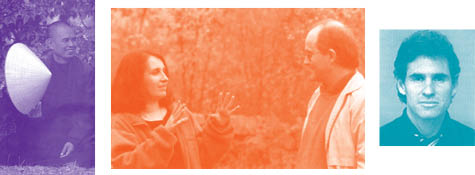
Sharon Salzberg on Preserving the Dharma
From “The Dharma of Liberation” (Spring 1993):
Sharon Salzberg: A most extraordinary facet of the dharma in America is the demand on the part of laypeople that it be relevant; not just about living a good, comfortable, peaceful life, but that it really be a dharma of liberation, that it be accessible to laypeople, that they receive teachings of the same caliber as anybody else, and that it must develop in a fully integrated way.
Tricycle: Is that strong enough to preserve the dharma?
Salzberg: When we first established the Barre Center for Buddhist Studies, one mandate was the preservation of the dharma. In part, that was because Joseph Goldstein and I had spent time in Burma, a country threatened internally and externally. On one particular visit somebody took us to a place where they had donated a great deal of money to construct an area for stone slabs on which the entire Tripitaka [the Pali canon] was being engraved. It was like a graveyard, stone slab after stone slab, with people etching out every word in order to preserve the dharma. On a deeper level, the dharma is preserved only through the realization of beings. It’s not preserved as a body of knowledge but in the buddhahood of each realized being. Because America is relatively prosperous, there’s often a flippancy about preserving religion. We have not necessarily seen or acknowledged the desecration of a religion, or the annihilation of a people, or a massive political upheaval. There are people here devoted to dharma, but a sense of preservation is not the common consciousness.
We are living in a time when our relationship to tradition is very different from what it was in previous eras. I notice that I don’t bother absorbing information in the same way as I used to. Instead I think, “Oh, I’ll just google it again later.” In the old days, practitioners felt responsible for making sure there was continuity in their practice and that the techniques, metaphysics, and cosmology were being passed down in a way that resembled what they had been taught.
To me, the notion of preserving the dharma is not so much about the preservation of what has come before as it is about an individual commitment to renew the dharma all the time through the way we live. Preservation occurs through the choices we make, how we treat other people, and so on.
My teachers were, by and large, very open. I remember when a fellow student questioned our teacher Munindra about past and future lives and other realms of existence. In response, Munindra explained, “You don’t have to believe it. It’s true, but you don’t have to believe it.” In many ways I had a classical education in meditation and dharma, but I was also taught that Buddhist teachings didn’t have to be held in a rigid dogma and that they could be expressed through life practices like generosity and morality. Undertaking a view of your entire life as a field of practice is one of the easiest possible pathways to the dharma. It’d be very hard to tell lies all week at work, and then sit down to meditate on Saturdays to seek the truth.
At the same time, there is a place for recognizing that a body of knowledge does exist—although nowadays most meditation teachers don’t say they teach Buddhism and instead are more likely to say they teach mindfulness. Whether the practitioner is served most by decontextualizing these teachings and methods is a very controversial question, but nobody really knows the answer.
The Buddhist teachings tell us that study makes your path broader, and that’s been true for me. On a certain level I’m very traditional, even though I use a different vocabulary to express the teachings. But you could say that all the traditional methods of practice are based on the qualities they produce: the goal, for instance, is not to keep your mind on your breath or move your attention up and down your body but rather to develop qualities of mind and being such as concentration, stability, resilience, and faith. If each of us understands what the methods are for, what we’re really doing, we can open up to understand that there are many ways to explore.
We commonly associate the idea of faith with being taught rigid ideas of what to believe, yet in Buddhism the opposite idea is taught: Faith is a quality that grows as you question, explore, and really put teachings into practice. The more you study, the less dogmatic you get.
Sharon Salzberg is a meditation teacher and New York Times best-selling author. She is the cofounder of the Insight Meditation Society in Barre, Massachusetts, and has played a key role in bringing Asian meditation practices to the West.
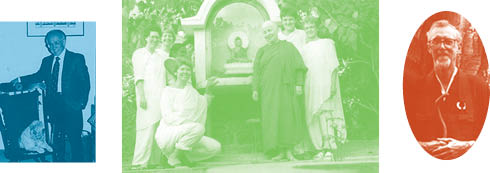
Jon Kabat-Zinn on Mindfulness
From “In the Dukkha Magnet Zone” (Winter 1991):
Tricycle (Barbara Graham): What are the implications of taking mindfulness practice outside of its formal traditions and historical context? Is there a danger of watering it down too much, of endangering its integrity?
Jon Kabat-Zinn: I think there is always a danger of a tradition losing its integrity or being distorted by someone whose understanding is limited. But it’s even more of a danger, if one is concerned about human suffering, to become so doctrinaire that you’re basically captivated by your own requirements to be pure to a particular tradition. . . .
We can see that the original wording of the question Tricycle posed in 1991 carried an implicit assumption and assertion that the dharma was being “watered down” to one degree or another in MBSR [Mindfulness-Based Stress Reduction]. The question was framed as: “When is it ‘too much’?” It also included concern that mindfulness will be taken out of its historical context and thereby its integrity will possibly be compromised.
To get started, what if we posited for a moment that, in essence, the dharma is not being watered down in MBSR and that whatever we mean by “historical context” is era-dependent? What if in this era mindfulness is being contextualized adequately and appropriately within the domains in which we work?
Even within the framework of classical buddhadharma, everybody’s unique trajectory starts with encountering the dharma within one tradition or school or teacher. Nondual Maha-yana traditions emphasize the possibility of transmission taking place outside the framework of the sutras by directly pointing to the nature of mind. Skillful meditation teaching, practice, and dialogue can serve as a vehicle for such transmission. This being so, we might ask whether we can usefully differentiate buddhadharma from a more universal articulation of dharma that might be a door into insight and potential liberation from suffering, given that the classical Buddhist doors are not a viable option for everyone. In the face of human suffering, how much exposure to mindfulness—also understood as heartfulness—would be too little, or too “decontextualized,” if it inspired somebody who was suffering to practice formally or informally and find new ways to be in wiser relationship to his or her situation and possibly benefit in terms of greater well-being, health, and healing?
I do think and hope that the outsized popularity and hype accorded to mindfulness at the moment will be a passing fad and that those with more opportunistic intentions will soon be on to the next next thing.
The whole idea of MBSR was to make mindfulness meditation practice so commonsensical to people that they would actually incorporate it into their lives. After doing this, they could see for themselves whether it was of some value in facing and befriending suffering, understanding it to one degree or another, and perhaps even freeing themselves from its root causes. MBSR and its many mindfulness-based cousins were always meant to be a skillful means for making access to the universal essence of dharma possible for virtually anybody who cared to explore it.
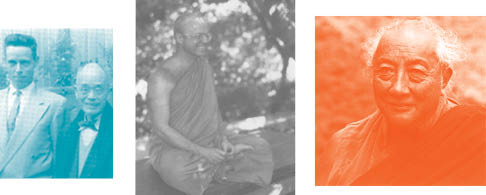
Of course, as with any educational or clinical curriculum, there is the usual heterogeneity in the quality and depth of delivery of MBSR programs, teacher competencies, and the fact that participants will always derive a range of potential benefits. Not every person taking an MBSR program will go on to cultivate a deeper dharma practice, although many do. Nor is every teacher necessarily up to inspiring a lifetime of ongoing practice and deepening development in others. At this time, the global MBSR and MBCT [Mindfulness-Based Cognitive Therapy] teacher communities are taking great pains to establish teacher competency standards and criteria as well as rigorous professional training programs to maximize the impact of eight-week-long mindfulness-based programs on the lives of participants. In some of those professional training programs, Buddhist meditation teachers with interest in contributing to high dharma integrity in mainstream mindfulness programs, such as MBCT, are an integral part of these efforts.
As I know from my own work, there are many thousands of people who have an ongoing meditation practice now because of having taken a mindfulness-based program. There are also many hundreds if not thousands of clinicians, researchers, graduate students, young scientists, physicians, and other professionals who are practicing mindfulness in authentic ways, often within various Buddhist traditions. But virtually all of them are working in mainstream settings (I avoid the term “secular” since it feels dualistic to me and surrenders the sacred element of practice and embodied dharma) to bring greater mindfulness and heartfulness into the culture in different ways and venues.
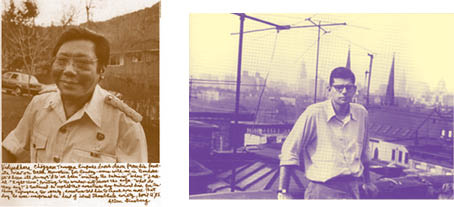
The need to alleviate greed, hatred, delusion, and suffering is infinite, so why not help build an ever-self-correcting edifice of ongoing learning, wisdom, and compassion in the world rather than assume that mainstream efforts for mindfulness-based clinical programs are fundamentally unethical, dumbed-down, or divorced from a deep liberating potential? Even if there are specific instances where problems need to be addressed—as of course there always are—that doesn’t mean we should abandon the essential promise of an ethical approach to suffering, healing, and wisdom, even in the domains of business, banking, the military government, criminal justice, the law, and so on.
With the exponential explosion in the scientific and medical literature of studies on “mindfulness”—at least some of which are rigorous from both the scientific and dharmic perspectives—functioning as a primary driver of worldwide interest, it was inevitable that “mindfulness” would eventually come to be hyped, commercialized, and exploited by some and vociferously criticized by others. I do think and hope that the outsized popularity and hype accorded to mindfulness at the moment will be a passing fad and that those with more opportunistic motivations will soon be on to the next next thing. That will leave those of us who care deeply about this work to continue doing it and cultivating it in ways that the world is starving for.
Never have we needed the wisdom and freedom of the dharma as we do now, for the sake of all beings and for the planet itself. So I think taking certain risks to go beyond any tendency we might have to fall into parochial, fundamentalist, dogmatic, sectarian, and dualistic perspectives is what is called for in this era. It seems to me that each one of us has a unique opportunity and role to play in this unfolding, grounded in our essential interconnectedness. We need all the various and disparate voices in this conversation, and we need to listen to each other with open hearts and deep attending. The dharma, of course, will take care of itself, as it always has. All we need to do is take care of what truly needs tending to, with tenderness, clarity, and resolve. And that is only everything.
Jon Kabat-Zinn, Ph.D., is professor of medicine emeritus at the University of Massachusetts Medical School, where he founded the Center for Mindfulness in Medicine, Health Care, and Society, and its world-renowned Mindfulness-Based Stress Reduction (MBSR) Clinic. He is the author of ten books, including the bestsellers Full Catastrophe Living and Wherever You Go, There You Are. His work has been published in over 40 languages.
Web-only Exclusive
Allan Badiner on Psychedelics
From “Psychedelics: Help or Hindrance?” (Fall 1996):
Buddhism and psychedelics share a concern with the same problem: finding that which frees the mind. While psychedelics lurk in the personal histories of many (perhaps most) first-generation Buddhist teachers in Europe and America, today we find many teachers advising against pursuing a path they once traveled. Few Buddhists make the claim that psychedelic use is a path itself; some maintain that it is a gateway, and others feel strongly that Buddhism and psychedelics don’t mix at all.
In 1996, Tricycle pronounced the 1960s explosion of LSD to have blown the generation gap wide open. “The old were appalled while the young were enthralled,” as millions explored LSD, magic mushrooms, mescaline, peyote, and cannabis. Then came Manson and Nixon, and the cultural and legal pendulum swung in the other direction. By the seventies, seekers were searching for a more sustainable path of mind expansion and spiritual development. Buddhism was there to help. Spiritual teachers and writers including Jack Kerouac, Alan Watts, Allen Ginsberg, and Ram Dass spoke of both Buddhism and psychedelics.
But developments since 1996 have fundamentally changed the context within which we can look at the relationship between the dharma and psychoactive plants. Life support systems of the planet are unraveling, and the climate has become reliably chaotic. In the era of the “sixth extinction,” as the science writer Elizabeth Kolbert put it, we all wonder if we will be able to stop or slow the damage we are doing. Understanding our interconnectedness to others and the earth—or what the Zen master Thich Nhat Hanh calls “interbeing”—is more important than ever, and this understanding is a core feature of mystical or transcendent experiences that can be brought on using psilocybin, MDMA, and other psychedelic agents.
It is in this context that the Buddhist writer and teacher Robert Thurman—who has never been a psychedelic enthusiast—told a crowd of 300 at a 2014 Burning Man event that when one considers the magnitude of the challenges ahead, psychedelics that can rapidly develop our empathetic capacity could be considered a skillful means provided they were used carefully. The fifth precept of Buddhism as given in the Pali canon, Thurman added, was clearly referring to alcohol, which was seen, even in ancient times, as a huge societal and health problem.
Ironically, many of the psychedelics that were once reviled and made illegal are now reemerging with the promise of being effective treatments for some of the most intractable maladies. Rick Doblin and his organization MAPS (Multidisciplinary Association for Psychedelic Studies), along with the Heffter Research Institute, have been pressing the government to pursue the research of MDMA, psilocybin (the psychoactive ingredient in magic mushrooms), and other materials, and the Veterans Administration has already become increasingly receptive to exploring psychedelics as a way to reduce the mounting number of suicides by veterans with PTSD.
Gradually over the past decade, the worldwide ban on the medical use of LSD and psilocybin has been lifted. Scientists are looking for medical benefits in a variety of drugs, such as MDMA, ketamine, ibogaine, and psilocybin. Also being investigated are therapeutically beneficial uses for cannabis as well as its non-psychoactive cannabinoids, such as CBD (cannabidiol). Potential applications for psychedelics are vast and include treating addiction, depression, post-traumatic stress disorder, neuropathic pain, epilepsy, and the anxiety caused by the diagnosis of life-threatening illnesses such as cancer—and possibly treating cancer itself.
The easing of restrictions on research has already led to some compelling discoveries. Research in London at Imperial College has indicated that, in a way similar to meditation, psilocybin diminishes certain brain activity that causes intractable depression.
The use of psilocybin in conjunction with meditation (now being studied at Johns Hopkins University School of Medicine under the direction of Roland Griffiths, a professor in the Departments of Psychiatry and Neurosciences, and in Switzerland with Zen teacher Vanja Palmers) may lead to a true blending of Buddhist and psychedelic practices that produce lifelong benefits. The profound insights and allaying of suffering experienced in psychedelic journeys can, in turn, be deepened and integrated by Buddhist practice.
So currently in South America—and increasingly in North America as well—we see a panoply of retreats at which both Zen meditation teachers and shamans are sharing ayahuasca, a rainforest-grown combination of powerful plant psychedelics. Alistair Appleton, a UK Buddhist teacher has been collaborating with indigenous shamans on retreats and recently filmed a documentary about ayahuasca in Brazil. In San Francisco, we see Buddhist nun Jana Drakka tending to the homeless and sharing cannabis with them for their pain. At music festivals, we see lay Buddhists giving care to users having difficult psychedelic experiences.
Relieving suffering is essentially Buddhism in action, and, as I wrote in 1996, Buddhism and psychedelic medicine are pursuing a common direction: the liberation of the mind. As Tricycle founder Helen Tworkov wrote in her editorial for the psychedelics issue, “Just say maybe.”
Allan Badiner is a Tricycle contributing editor. He is the editor of Zig Zag Zen: Buddhism and Psychedelics (Chronicle Books, 2002) as well as two other books of collected essays. He practices Zen in the tradition of Thich Nhat Hanh.
Thank you for subscribing to Tricycle! As a nonprofit, we depend on readers like you to keep Buddhist teachings and practices widely available.
